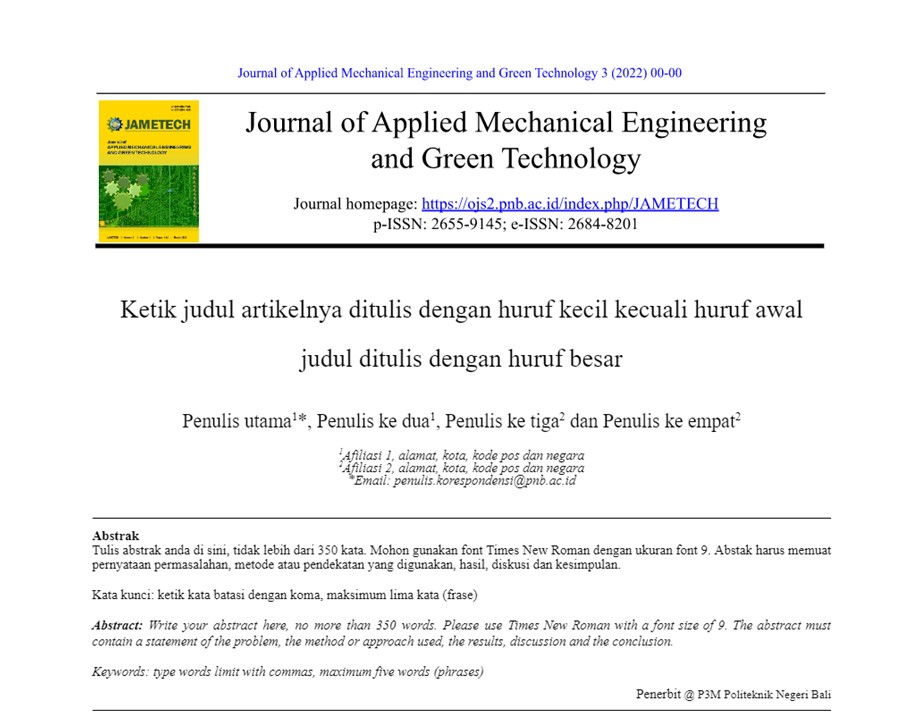Perilaku supercooling pada proses solidification material perubahan fasa berbasis air
DOI:
https://doi.org/10.31940/jametech.v3i2.71-77Keywords:
Supercooling, nucleation agent, phase-Change Material, thermal energy storageAbstract
Thermal energy storage based on phase change material (PCM) as an energy storage material is considered a promising technology to meet future energy needs due to its low cost and high storage capacity under isothermal conditions. Thermal energy storage is an inevitable component of intermittent use of renewable energy technology, due to its significant role in improving efficiency and Quality of Service (QoS). At present, one of the main researchers in such systems is to improve the efficiency of heat exchangers and heat carriers. Therefore, studying the thermal behaviour and thermophysical properties of heat storage is very important. Supercooling is a thermophysical property of PCM that is problematic in thermal storage applications and is a challenge in technical applications. Supercooling of phase change materials (PCM) during the process of changing from liquid to solid is a major problem in thermal energy storage, which reduces energy efficiency and exacerbates energy wastage. This study focuses on the supercooling characteristics of PCM under heterogeneous nucleation, which provides a new idea to investigate the effect of nucleating agents on the supercooling rate of aqueous solutions. Understanding, predicting and, where possible, preventing, or at least reducing, supercooling is of particular importance for latent heat thermal energy storage systems, as the temperature differences within them must be small to achieve higher efficiencies. Water is the most popular PCM today, because it has good characteristics, but has a weakness, namely high supercooling. Various methods have been sought and developed to control the behaviour of supercooling fluids. The most economical and efficient method for reducing or eliminating supercooling is the addition of a nucleating agent. Various PCM samples, namely propylene glycol solution in water, were made in various percentages (10/90, 20/80 and 30/70) with the aim of reducing supercooling of water. The samples made were tested by the T-history method. The results showed that the water supercooling decreased with the increase in the percentage of propylene glycol solution in water, from 10 degrees to 6, 4, 2 degrees respectively, making it suitable for cooling applications.







